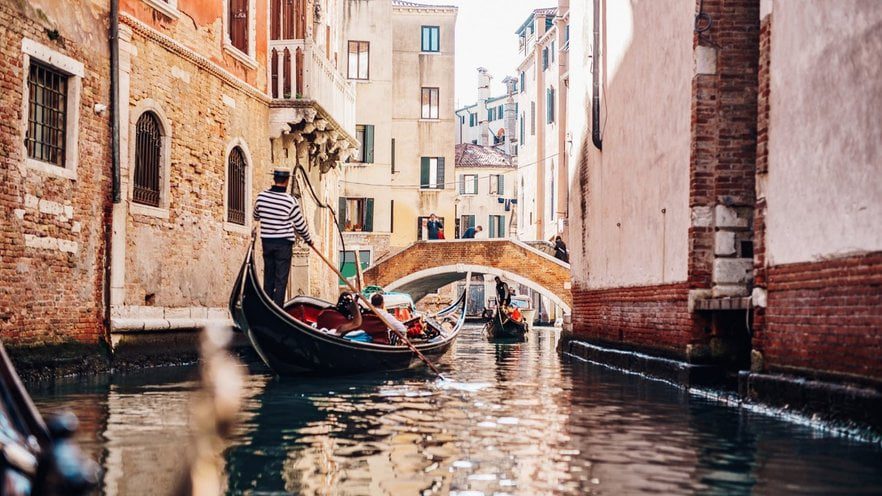The iconic Italian city has limited the size of tour groups as part of its mission to regulate the massive crowds and improve local life. Venice has banned guides from using megaphones and restricted group sizes to 25 people.
The new rules regarding tour group sizes came into effect on Thursday, but include exceptions for children under two years old, school groups, and educational trips. They also apply to the Venetian islands of Murano, Burano, and Torcello.
The restrictions were initially supposed to be enforced in June but were postponed as many guides had already booked group tours exceeding 25 people. Guides who violate the rules face fines ranging from 25 to 500 euros.
The use of loudspeakers, “which can cause confusion and disorder,” has also been banned, according to city authorities.
Elisabetta Pesce, the city official responsible for safety, stated last year that these measures aim to improve the movement of groups through the historical center of Venice, as well as the frequently visited islands of Murano, Burano, and Torcello.
They also hope to improve the lives of those who live and work in the city.
How Else is Venice Handling the Crowds?
The city is also testing a new fee for day trips. A fee of 5 euros per person was charged on 29 peak days from April to mid-July, including most weekends. It was intended to regulate crowds, encourage longer visits, and improve the quality of life for Venice residents.
In total, the experiment generated 2.2 million euros from 450,000 visitors, but some called it a “failure.” They claimed it did not help reduce the number of tourists: during the first 11 days of testing, the city had an average of 75,000 visitors per day.
The UN cultural agency named the impact of tourism on the fragile lagoon city as one of the main factors why it twice considered placing Venice on the list of UNESCO heritage sites in danger.
The city first avoided this by limiting the passage of large cruise ships through the Giudecca Canal, and in September last year, it announced the introduction of a day trip fee, which was postponed due to the decline in tourism during the COVID-19 pandemic.

